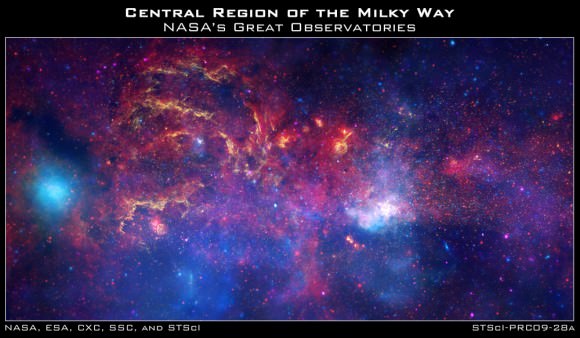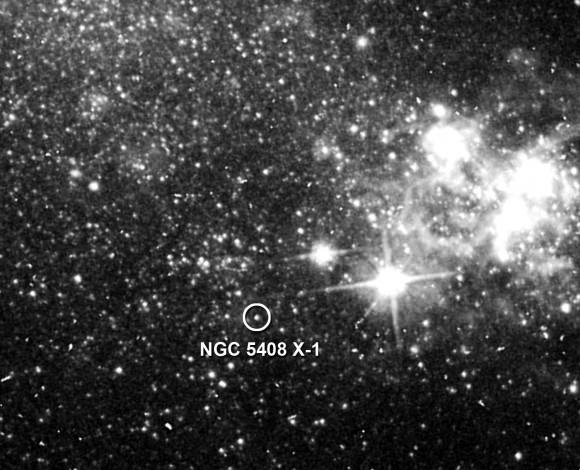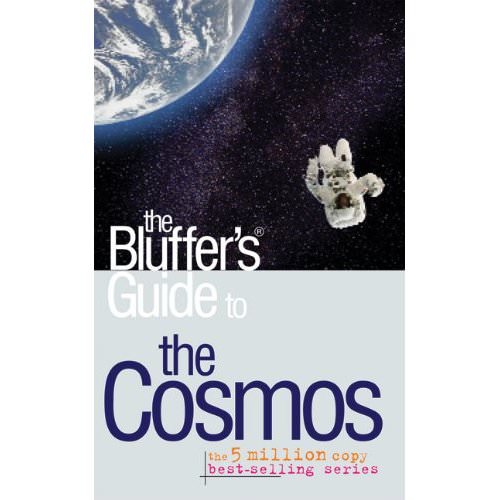Crescent Earth as Seen by Comet Chasing Spacecraft
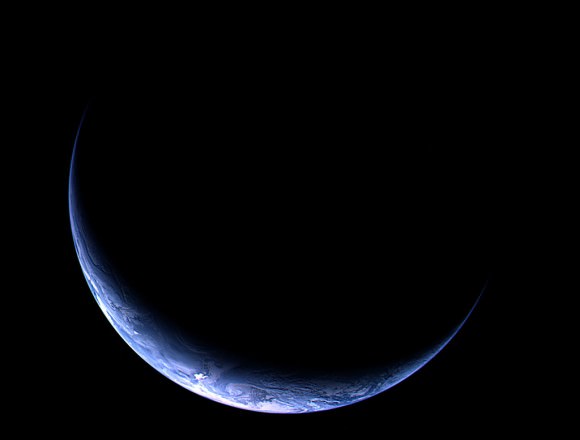
Title this one "Rich Blue Crescent" (as opposed to Pale Blue Dot.) This spectacular image of our home planet was captured by the OSIRIS instrument on ESA's Rosetta comet chaser today (November 12) at 12:28 GMT from about 633,000 km as the spacecraft approached Earth for the third and final swingby. Closest approach is due at 07:45 GMT, on November 13. You can follow Rosetta's progress at ESA's Rosetta site and the Rosetta Blog.
NASA Science News for November 12, 2009
On Monday, NASA will begin transmitting commands to its Mars exploration rover Spirit as part of an escape plan to free the venerable robot from its Martian sand trap.
FULL STORY at
http://science.nasa.gov/headlines/y2009/12nov_freespirit.htm?list1035898
Shedding Light on the Sun's "Lithium Mystery"
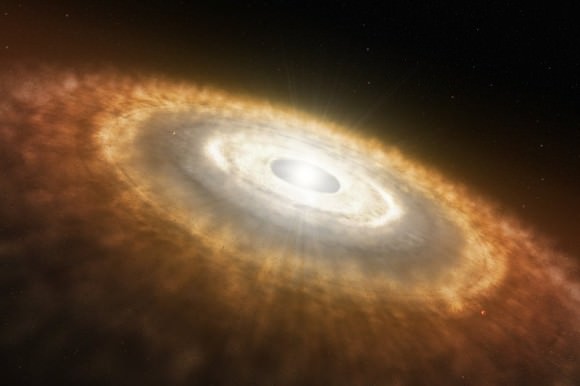
For decades, astronomers have known our Sun contains a low amount of lithium, while other solar-like stars actually have more. But they didn't know why. By looking at stars similar to the Sun to study this anomaly, scientists have now discovered of a trend: the majority of stars hosting planets possess less than 1% of the amount of lithium shown by most of the other stars. “The explanation of this 60 year-long puzzle is for us rather simple,” said Garik Israelian, lead author on a paper appearing in this week's edition of Nature. “The Sun lacks lithium because it has planets.”
This finding sheds light not only on the lack of lithium in our star, but also provides astronomers with a very efficient way of finding stars with planetary systems.
(...)
Read the rest of Shedding Light on the Sun's "Lithium Mystery" (346 words)
2012: NASA's Scientific Reality Check
NASA is now joining in to combat the 2012 nonsense. Don Yeomans, manager of NASA's Near Earth Object office has produced a video and written an article, providing the scientific realities surrounding the celestial happenings of 2012. Yeomans has done a wonderful job explaining everything that is and isn't going to happen in 2012, and we're happy to add his work to our collection of 2012 debunking articles.
(...)
Read the rest of 2012: NASA's Scientific Reality Check (651 words)
Great Observatories Combine for Stunning Look at Milky Way
All we can say is, "Wow!" In celebration of the International Year of Astronomy 2009, NASA's Great Observatories — the Hubble Space Telescope, the Spitzer Space Telescope, and the Chandra X-ray Observatory — have collaborated to produce an unprecedented image of the central region of our Milky Way galaxy. This is a never-before-seen view of the turbulent heart of our home galaxy. The image is being unveiled by NASA to commemorate the anniversary of when Galileo first turned his telescope to the heavens in 1609. NASA provided this image and the individual images taken by each of the Great Observatories to more than 150 planetariums, museums, nature centers, libraries, and schools across the country.
(...)
Read the rest of Great Observatories Combine for Stunning Look at Milky Way (86 words)
Finding the Mama Bear of Black Holes
While astronomers have studied both big and little black holes for decades, evidence for those middle-sized black holes has been much harder to come by. Now, astronomers at NASA's Goddard Space Flight Center in Greenbelt, Md., find that an X-ray source in galaxy NGC 5408 represents one of the best cases for a middleweight black hole to date. "Intermediate-mass black holes contain between 100 and 10,000 times the sun's mass," explained Tod Strohmayer, an astrophysicist at Goddard. "We observe the heavyweight black holes in the centers of galaxies and the lightweight ones orbiting stars in our own galaxy. But finding the 'tweeners' remains a challenge."
(...)
Read the rest of Finding the Mama Bear of Black Holes (506 words)
the Bluffer's Guide to the Cosmos
The English language continually evolves. Just see Ambrose Bierce's definition of dictionary. New concepts call for new words that often evolve from a new dictum. Astronomy has made its fair share of contributions to this cause. But, Daniel Hudon's book ";The Bluffer's Guide to: The Cosmos" belies such augmentations. Within, the language is as common and everyday as what you used around the gas pump or barber shop. Yet, the science and information is as exact and appropriate as needed to communicate an idea.
(...)
Read the rest of the Bluffer's Guide to the Cosmos (290 words)
Good News for Science News

Here's some refreshing news! In an era when mainstream media is cutting back on their science departments and science reporting, the Discovery Channel has just made an investment to step-up their science news with the re-launch of their new and improved news website, Discovery News. In the middle of it all is our very own Ian O'Neill, who is also the producer for Discovery News Space. The "new" part of Discovery News is that Ian's work on the space side is now integrated into a higher profile, redesigned news site. Ian and I had a chance to talk today about this good news for science news.
(...)
Read the rest of Good News for Science News (255 words)
NASA Science News for November 10, 2009
The 2009 Leonid meteor shower peaks on Nov. 17th with a sprinkling of meteors over North America and a possible outburst over Asia.
FULL STORY at
http://science.nasa.gov/headlines/y2009/10nov_leonids2009.htm?list1035898
Physicist Vitaly Ginzburg Dies at age 93
 Vitaly Ginzburg, a Russian physicist and Nobel laureate, died yesterday of cardiac arrest. He was 93 years old. Ginzburg shared the 2003 Nobel Prize in physics for his work on superconductors, but contributed to many other fields of study, including quantum theory, astrophysics, radio-astronomy and diffusion of cosmic radiation in the Earth's atmosphere. In addition, he is known for his contributions to the development of the Russian hydrogen bomb in the 1950s, for which he received the Stalin Prize.(...)
Vitaly Ginzburg, a Russian physicist and Nobel laureate, died yesterday of cardiac arrest. He was 93 years old. Ginzburg shared the 2003 Nobel Prize in physics for his work on superconductors, but contributed to many other fields of study, including quantum theory, astrophysics, radio-astronomy and diffusion of cosmic radiation in the Earth's atmosphere. In addition, he is known for his contributions to the development of the Russian hydrogen bomb in the 1950s, for which he received the Stalin Prize.(...)
Read the rest of Physicist Vitaly Ginzburg Dies at age 93 (316 words)
Planetary Society to Launch Three Separate Solar Sails
On the 75th anniversary of astronomer Carl Sagan's birth, the Planetary Society announced their plans to sail a spacecraft on sunlight alone by the end of 2010. Called LightSail, the project will launch three separate spacecraft over the course of several years, beginning with LightSail-1, which will demonstrate that sunlight alone can propel a spacecraft in Earth orbit. LightSails 2 and 3, will travel farther into space.
Sagan, co-founder of the Planetary Society was a long-time advocate of solar sailing.
(...)
Read the rest of Planetary Society to Launch Three Separate Solar Sails (463 words)
Surprise! Unknown Asteroid Buzzed Earth

A previously undiscovered asteroid came within 14,000 km of Earth last week, and astronomers noticed it only 15 hours before closest approach. On Nov. 6 at around 16:30 EST a 7 meter asteroid, now called 2009 VA, came only about 2 Earth radii from impacting our home planet. This is the third-closest known non-impacting Earth approach on record for a cataloged asteroid.
(...)
Read the rest of Surprise! Unknown Asteroid Buzzed Earth (181 words)
NASA Satellites Monitor Tropical Storm Ida

NASA has been keeping an eye on tropical storm Ida off the Gulf Coast, which was downgraded from a hurricane earlier today. Its satellites have been helping meteorologists to measure the rainfall and windspeeds of the storm. Ida is predicted by the National Hurricane Center in Miami, Florida to make landfall near Pensacola, Florida on Tuesday morning (Nov. 10th), after which it is expected to drop in intensity and head East.(...)
Read the rest of NASA Satellites Monitor Tropical Storm Ida (311 words)
One Strange Mars Rock

Opportunity has come upon another big rock on Mars. But what is it? Another meteorite? A big clump of ejecta from an old impact? There's lots of other debris scattered around this area as well. The rock has been named "Marquette Island," staying with the island theme for the other meteorites Oppy has come across, and the rover may take the "opportunity" to get closer to this rock and check it out, given the sand dunes surrounding it don't provide too much of an obstacle. So maybe next week we'll find out what it is. But in the meantime, enjoy these color and 3-D images (see more below) of the rock via Stu Atkinson from Unmannedspaceflight.com. Check out more great looks at Marquette Island at Stu's blog about Oppy's travels, Road to Endeavour.
Oh, and rumor has it that the extrication process may have begun to free the Spirit rover. Latest images show she has moved every so slightly. More as it becomes available….
(...)
Read the rest of One Strange Mars Rock (29 words)
Bread Dropped By Bird Causes Problems for LHC
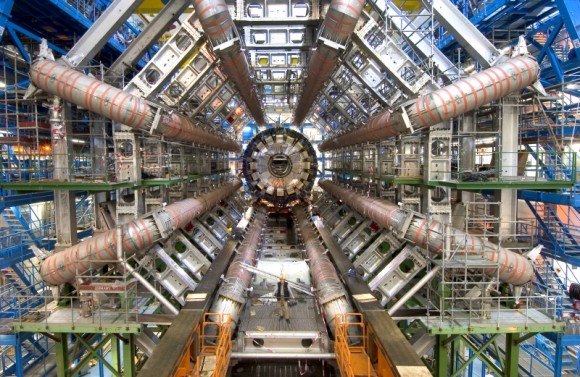
Yes, this headline appears to be true. A bird dropping a piece of bread onto outdoor machinery has been blamed for a technical fault at the Large Hadron Collider (LHC) this week which saw significant overheating on parts of the accelerator. The LHC was not operational at the time of the incident, but the spike produced so much heat that had the beam been on, automatic safety detectors would have shut down the machine. This would put the LHC out of action for a few days while it was restarted, but there would be no repeat of the catastrophic damage suffered last September. That's when an electrical connection in the circuit itself failed violently, causing a massive liquid-helium leak and subsequent damage along hundreds of meters of magnets.
Hmm. The idea of a time-traveling Higgs boson coming back to prevent its own discovery is seeming less and less far fetched!
(...)
Read the rest of Bread Dropped By Bird Causes Problems for LHC (94 words)
